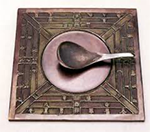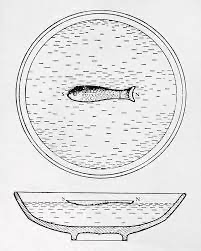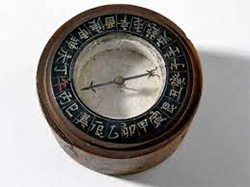The Invention and Early History of the Compass
The compass is a very old invention. It dates to the Han Dynasty, which ruled China for two centuries on either side of the year 0. 
Chinese people used lodestones (made of the mineral magnetite) to make the first compasses, which were used not for navigation but for divination: for uses such as determining where to build a house or grow crops. Rare gems were often a target of early compasses. Typically, a compass of these early years was a magnetic needle floating in water. Some scientists did use a "dry" compass, eschewing a bowl of water for a box, sometimes in the shape of a tortoise; the "wet" compass was much more prevalent. 
An early name for the compass was the South Pointing Fish, for obvious reasons: It pointed to the south magnetic pole, and it was shaped like a fish. Other compasses used a spoon to do the same thing: point south. Some "dry" compasses used spoon-shaped lodestones that rested on bronze plates. 
It was centuries later, during the Song Dynasty, that Chinese scientists used a compass for navigation. Chinese armies are known to have used a compass to navigate on land as early as the 11th Century and to navigate at sea as early as the 12th Century. By that time, explorers and travelers in the European and Muslim worlds had begun to use a compass for navigation. The former used a compass to point north; the latter did that but also used a compass to point toward Mecca. |
|




